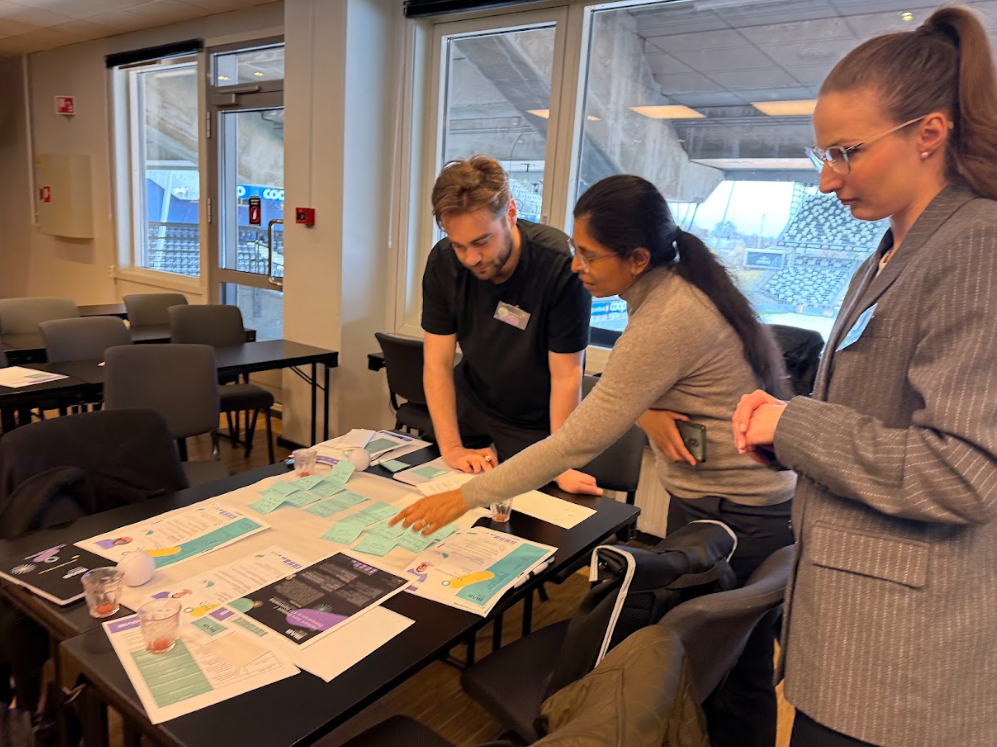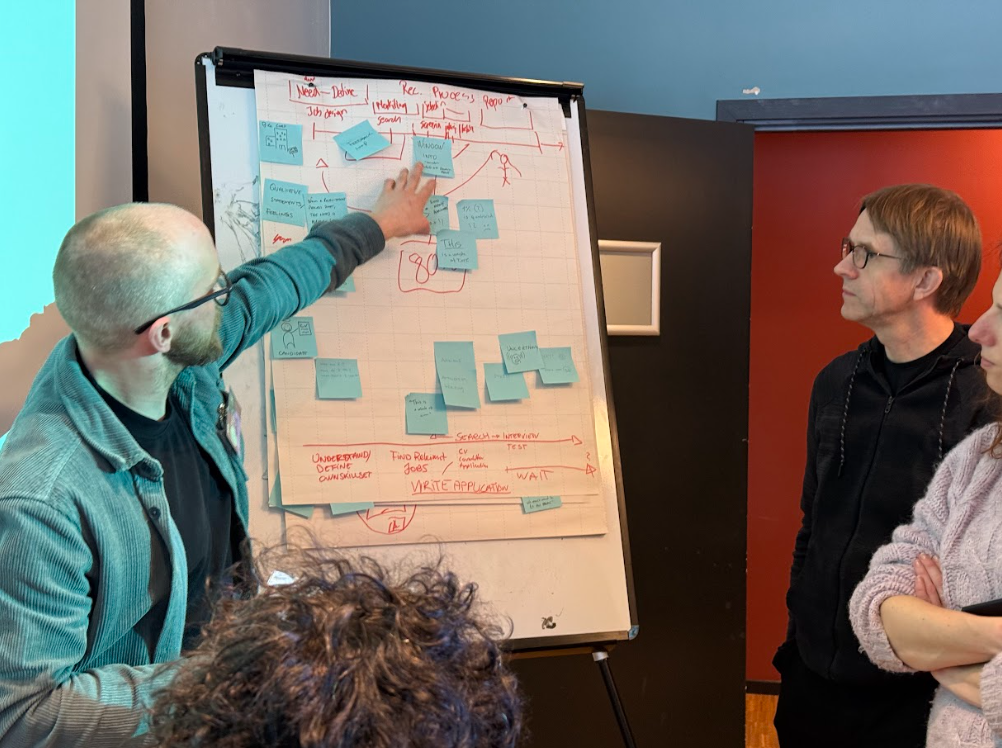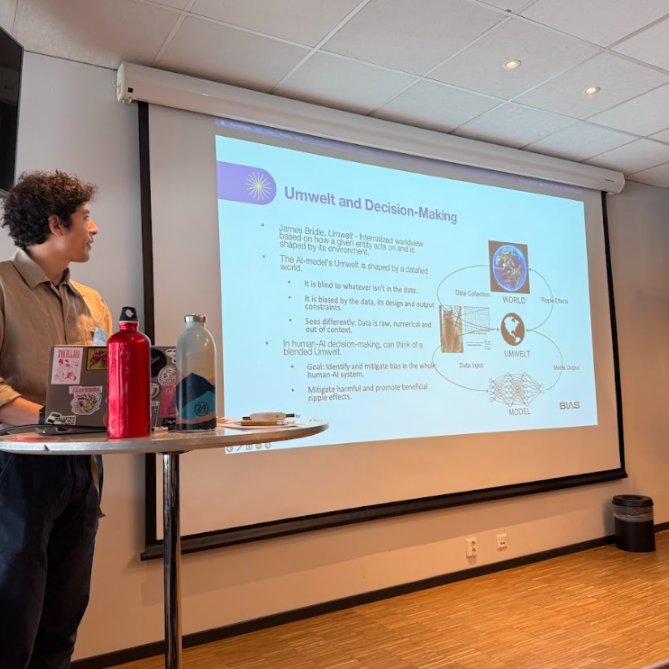21st May 2025
On 27 March, BIAS hosted the first in a series of international AI capacity-building training sessions. The first event, “Shaping Responsible and Inclusive AI in Recruitment”, was held in the Norwegian city of Trondheim. The event was led by Alexandre Puttick and Simona Lo Giudice, who are AI experts from the BIAS partner organisation Smart Venice.
The event started with an opening presentation on what bias is, from a psychological and sociological standpoint. The lecture provided participants with a common language toolkit to talk about different kinds of prejudice/bias, intersectionality, and systems of oppression. During this session, participants were also invited to reflect on how bias might have shaped their own opportunities in the job market. This exercise was based on the BIAS “Identity Wheel”, a project resource that is available for download here.

The next presentation featured a deep dive into the socio-technical implications of AI and fairness approaches. Here, participants had the opportunity to learn more about how the decision-making processes of AI in hiring systems work in practice. This presentation also explained why it can be difficult to mitigate AI discrimination, including difficulty in finding case studies, individuals not noticing that they are being discriminated against, and a lack of technical knowledge within anti-discrimination organisations. This paints a clear picture of the complexity of the situation.
The key concept of Value Sensitive Design was also introduced, explaining the intertwinement of technology with human values. VSD challenges developers to consider how social structures affect design processes and how normative assumptions relate to bias. Through a breakdown of the design process, participants learned where and how bias is embedded into AI applications. Finally, the presentation covered the relevant policy frameworks that regulate technology design, namely the European AI Act and GDPR limitations.

After a networking lunch with a buffet, we continued with the second part of the training, which was a practical workshop exercise, “The Value Sensitive Design Challenge: design your prototype”. Participants were divided into groups and tasked with designing an AI-driven recruitment tool that uses candidate data to aid in hiring decisions. The first task was to map direct/indirect stakeholders, desired values, and perceptions of said values for their design. Next, they applied VSD to envision how they could embed the desired values into the design process. This included considering, for example, value tensions, environmental sustainability, changes in future work, political realities, and generational ripples (future generations being shaped by our decisions). Each group created a poster explaining their prototype. The groups took turns presenting their ideas and collecting feedback from each other.

We would like to thank all the participants who joined our capacity-building training session. This was the first event in a series of international capacity-building events, and we are excited that it sparked so much learning and so many interesting discussions.
Sincerely,
The BIAS Team
